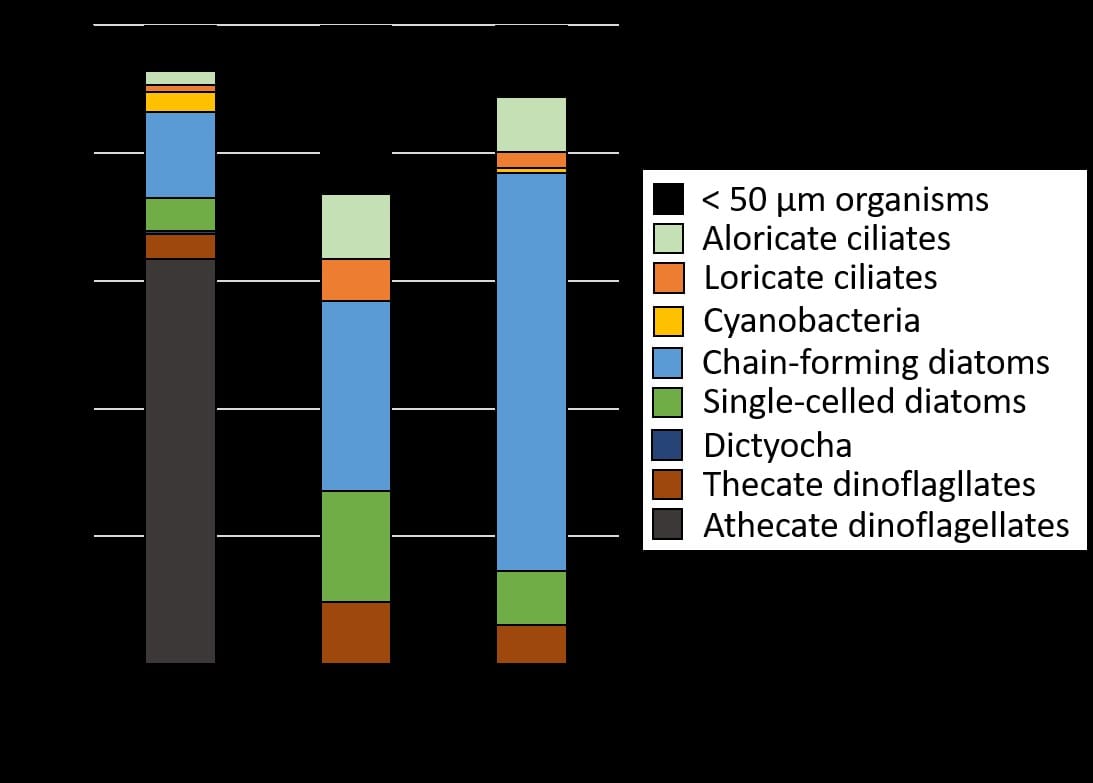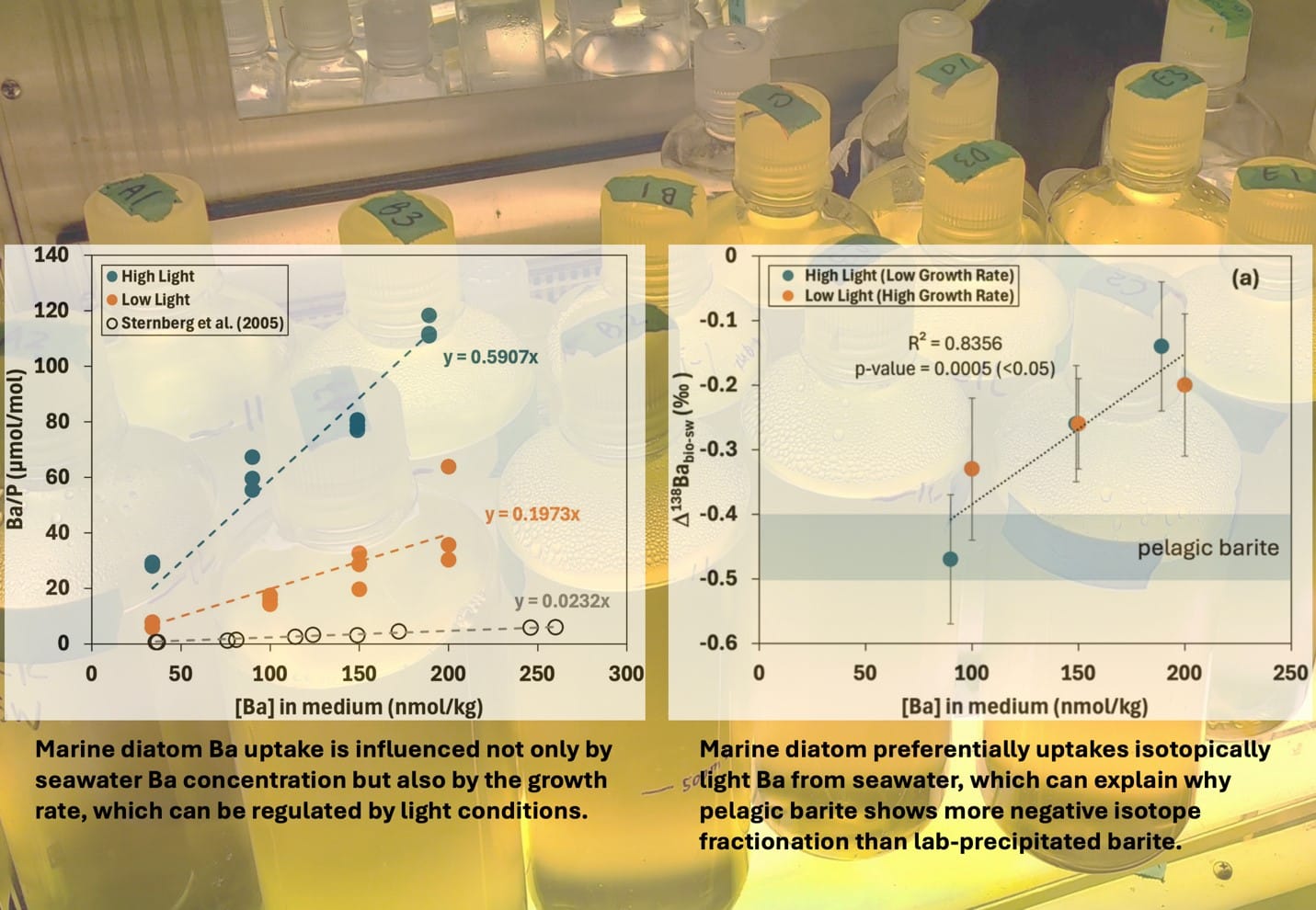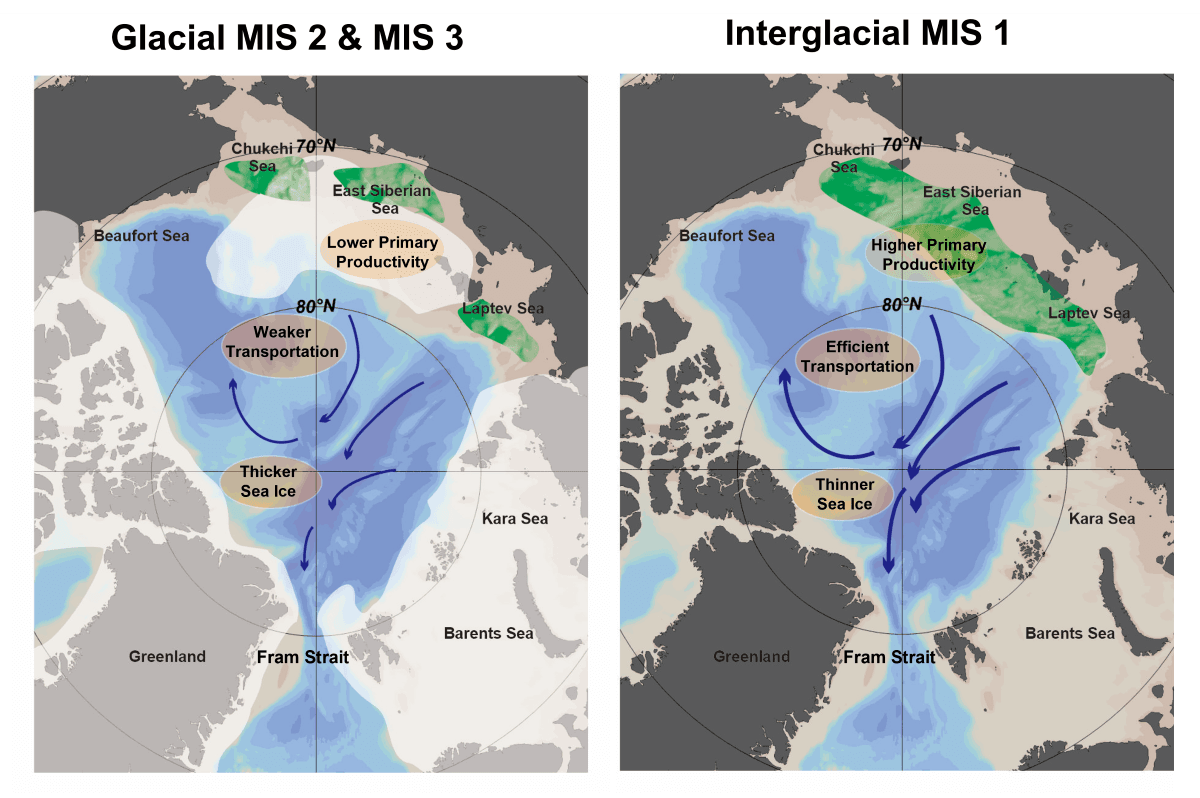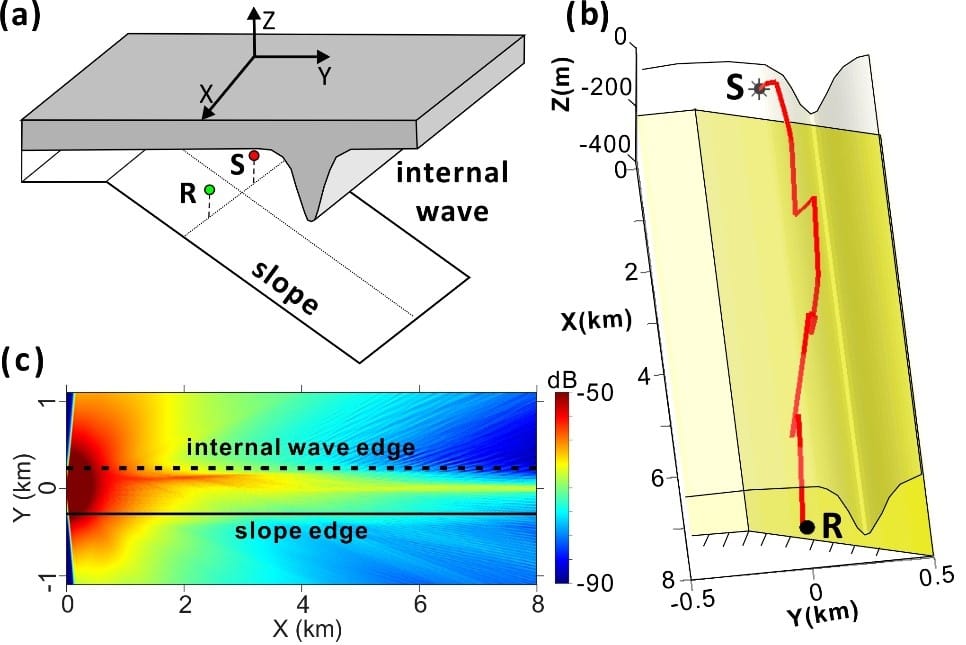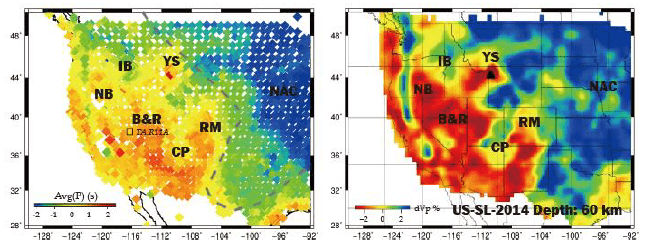Understanding past climate variability is crucial for improving our projection of future extreme climate events. Among various paleoclimate indicators, sea surface temperature (SST) plays a central role. One commonly used method for estimating past SST is to analyze the magnesium-to-calcium (Mg/Ca) ratio in the shells of foraminifera, a single-celled marine microorganism. Traditionally, multiple foraminiferal shells are combined into a single sample to obtain an average value—an approach known as “multi-specimen analysis”. However, to capture more detailed climate variability within specific time intervals, single-specimen analysis is required.
Since Mg/Ca measurements in foraminifera shells are highly susceptible to contamination, a series of cleaning procedures has been developed to ensure accurate measurements. However, overly aggressive cleaning can alter the original chemical composition of the shells, often resulting in lower Mg/Ca values and, consequently, less accurate SST estimates. To minimize sample loss in single-specimen studies, many previous investigations have opted for lower-intensity cleaning procedures. Nonetheless, as current SST calibration equations are derived from multi-specimen samples cleaned with higher-intensity protocols, it remains a critical question in paleoclimate research whether these calibrations are appropriate for single-specimen data.
To address this issue, Pei-Ting Lee, a PhD student at the Institute of Oceanography, National Taiwan University (IONTU), under the supervision of Associate Professor Sze Ling Ho, collaborated with Associate Professors Jeroen Groeneveld and Chih-Chieh Su from IONTU, as well as researchers from the Department of Geosciences at NTU and the University of Bremen, Germany. Their study systematically investigated the effects of different cleaning intensities on Mg/Ca ratios across six species of planktonic foraminifera, comparing both single- and multi-specimen samples and examining the influence of individual cleaning steps.
The results revealed that the inclusion of a reductive step—used to remove secondary calcite coatings—had species-specific effects on Mg/Ca ratios. However, when the reductive and heating steps were omitted, the Mg/Ca ratios of single and multi-specimen samples became broadly consistent. This finding supports the use of Mg/Ca-temperature calibration equations developed from multi-specimen data for single-specimen Mg/Ca-based SST reconstructions, thereby enhancing data comparability and reliability.
This study deepens our understanding of how specific cleaning steps influence foraminiferal geochemistry and contributes to the standardization and accuracy of paleoclimate reconstruction methods. In cases where sample size is limited, this study provides a more robust framework for ocean temperature estimation, offering valuable insights on past climate variability.
The study was published in the American Geophysical Union (AGU) journal Geochemistry, Geophysics, Geosystems.
Lee, P.-T., Ho, S. L., Groeneveld, J., Mohtadi, M., Shen, C.-C., & Su, C.-C. (2025). Effect of cleaning procedures on the Mg/Ca ratio of single-specimen planktic foraminifera. Geochemistry, Geophysics, Geosystems, 26, e2024GC011975. https://doi.org/10.1029/2024GC011975
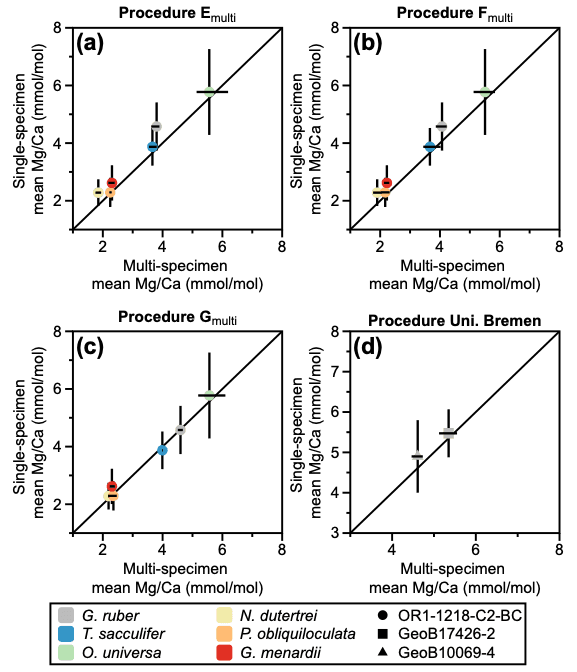
Figure 1. Comparison of Mg/Ca values from single- and multi-specimen foraminifera samples obtained using different cleaning procedures to assess their consistency and reliability.

